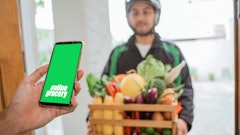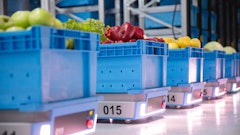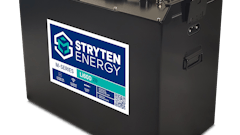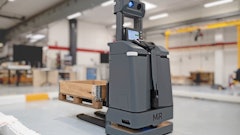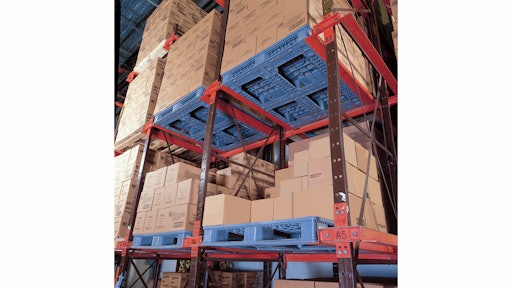
Today, we know reducing your carbon footprint and making environmentally positive decisions matters. Still, without detailed proof of the benefits, convincing stakeholders that positive environmental stewardship is directly linked to a company’s fiscal health, and therefore worth driving any kind of significant change, can prove to be difficult.
The food industry is unique. It takes the right mix of complex logistics, shipping plans, packaging materials and resources for companies to provide product to large brick and mortar stores when and where it’s needed. When food processors develop customer relationships to deliver goods over time, they are often measured on their environmental impact. Today’s transport packaging, like reusable boxes, cases, trays and pallets, should move product faster, safer, and more cost-effectively within in the supply chain, while helping to reduce your impact on the environment.
But, how can this be measured?
Modernized food processors need to prove they deliver economic and environmental value to their retail partners. They seek to reduce waste throughout the supply chain – from the farm to the plant, to the distribution center and ultimately to the retailer. All of this affects the modern company’s overall sustainability – and the expectations for improving environmental impact every year. Today’s companies need to be able to measure their sustainability and report with confidence that they can be the positive stewards of the environment many companies prefer, when choosing a partner in today’s marketplace.
What many food companies today may not realize is that by measuring environmental impacts and establishing a baseline, a plan can be created on how to improve environmental sustainability. Evaluating packaging, shipping needs and supply chain practices is one area that can be a big part of this plan.
Measuring and scoring sustainability occurs at an increasing rate in our industry. Still, it’s not fully understood. And because of that, a food company is less likely to know how to start in order to improve in the long run.
But there’s a silver lining here – fortunately, today’s food companies can actually prove the value of their sustainability if they look closely enough at the numbers behind the supply chain.
An Analytical Approach is Important
Some industry partners have tools that allow food companies a better understanding of their sustainable initiatives. With that, meaning can be drawn from the steps taken and the data accrued. It’s a good practice to gain a thorough understanding of all the basic inputs, and their environmental impact, that go into each packaging decision. Metrics such as packaging weight, volume, velocity, density and more are all collected to provide a more complete picture of the sustainability score that could win or lose millions of dollars’ worth of business. One of the best ways to view a full 360-degree picture of this is through Life-Cycle Assessment (LCA) methodology.
This type of analysis provides actionable data to detail your company’s environmental impact based on comparing transport packaging scenarios. The reports generated by the LCA methodology compare users’ packaging data and suggest potential opportunities for increased environmental sustainability.
For instance, ORBIS Corporation’s life cycle assessment-based sustainability tool, based on ISO 14040 methodology, allows companies to take a comparative look at packaging scenarios and quantify the environmental benefit of reusable packaging. This allows companies to collect the data they need to prove their impact on sustainability. Environmental sustainability isn’t a competitive advantage area in today’s business, but rather a necessity and an expectation to create a sustainable world for future generations.
With the calculations available through tools like these, your business can identify their carbon emissions, energy and solid waste generated on a relative basis from your unique data, make assumptions and identify opportunities for improvement.
You’ll get the hard facts, too. These types of tools reveal the positives, and negatives, in your sustainable initiatives.
- The carbon dioxide, solid waste and energy consumed.
- Implied changes you can make to take steps toward greater sustainability.
- The bottom line impact and opportunities for advancement.
In the infographic example above, end user responses to specific usage questions generated a scenario to provide information on two types of products – a limited-use wood pallet and a plastic reusable pallet. In this case the results show less energy, solid waste and carbon are used for the plastic reusable solution.
There are important implications from these results:
- Just because the results in this case are favorable for a plastic solution doesn’t necessarily mean one solution is better than another – yet in this case the environmental impact is less. Using Life Cycle Assessment methodology is intended to be directional and not for commercialization purposes.
- End users and packaging providers can use the data to determine areas to focus on to improve their impacts. (i.e.: trip distance, trip frequency, load weights, pallet selection, etc.)
Focus on Changes that Improve Environmental Impact
Every year food companies are presented an array of opportunities to improve their environmental impact by initiating numerous sustainable measures. But whether it’s cutting GHG emissions, reducing energy use or increasing recycling efforts, most aren’t actually capturing what these initiatives mean to them on a daily basis from an environmental perspective; more so, how it impacts their business.
So how can your company prove its positive impact on sustainability? It all starts with a deeper look at packaging.
Capture All the Movement
Within any supply chain, transport packaging travels far and wide, through numerous starts and stops. Capturing all associated packaging movements that occur through the various stages of a supply chain is essential in order to comprehend the economic and environmental costs associated with a given supply chain.
End of Life Evaluation
It is important to have a plan for transport packaging at the end of its service life. Now, thanks to years of education from a variety of sources, end of life packaging must be considered in any viable and sustainable supply chain. For reusable packaging, the base materials can be recovered, recycled and reprocessed into other useful packaging products.
What This Means for a Company
By taking a closer look and carefully measuring the impact your company’s packaging has on the environment, you can use the information in a variety of ways:
- Publish the data in your company’s annual sustainability report.
- Share with key strategic customers seeking sustainability results on the packaging sent to them.
- Participate in global sustainability reporting activities such as the Carbon Disclose Project (CDP) or Global Reporting Initiative (GRI).
- Build your reputation as a leader in sustainability for today and tomorrow.
Those analytical measurements provide the data needed for your company to improve year over year, ultimately assisting with the success of your triple bottom line – financial, social and environmental performance.
Bob Klimko is the director of marketing – Food and Beverage, for ORBIS Corporation.





